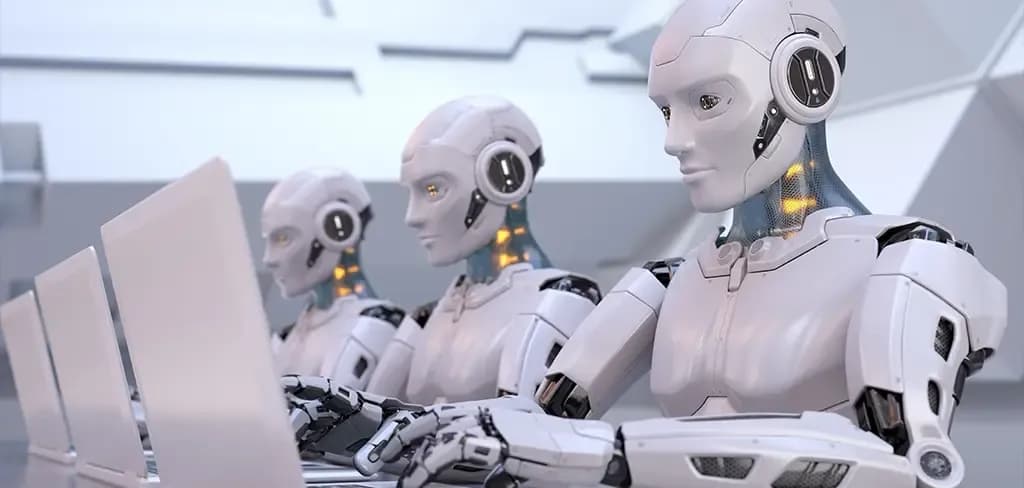Future Trends in Robotic Process Automation (RPA)
Introduction
1.Intelligent Automation
The most prominent trend in RPA is intelligent automation, which combines AI and RPA to provide more sophisticated and powerful solutions. It allows the bot to handle complex tasks involving decision-making, pattern recognition, and learning from data.
Benefits:
- Superior Capability: Intelligent automation handles unstructured data, including emails, images, and documents, making automation a wider use case.
- Increased Accuracy: The AI-powered bots continuously learn and improve, increasing efficiency.
- Predictive Insights: Based on historical data, bots can predict and provide proactive recommendations, ensuring optimal business process automation.
Hyperautomation
Hyperautomation means utilizing several different types of automation tools and technologies in an integrated way to bring end-to-end automation. This calls for automating as much as possible to optimize efficiency and productivity.
Key Components:
- RPA: Automates routine and rule-based work
- AI and ML: Enhance the cognitive capability of complex processes
- BPM: Models, analyzes, and optimizes the processes.
- Process Mining: It helps identify automation opportunities through insights into current workflows.
Cloud-Based RPA
As more and more organizations embrace cloud solutions, cloud-based RPA is the way forward. It offers scalability, flexibility, and lesser infrastructure costs than on-premises systems.
Benefits:
- Scalability: Scale automation efforts up or down without any infrastructure worries.
- Flexibility: Manage and deploy bots remotely to collaborate and support distributed teams.
- Cost Efficiency: Use cloud infrastructure to reduce hardware and server maintenance costs.
RPA as a Service (RPAaaS)
RPA as a Service (RPAaaS) is a subscription-based model that democratizes automation. It is available without the heavy investment usually required.
Benefits:
- Lower Entry Barrier: This allows SMEs to adopt RPA solutions inexpensively.
- Ease of Use: The service providers deal with setting up, maintenance, and updates so businesses can focus on automating processes.
- Scalability: It is easy to scale subscription levels according to changing automation needs.
2.Enhanced Security and Compliance
Ensuring RPA security is critical as automation adoption increases. Future RPA solutions will focus on protecting sensitive data and addressing regulatory needs.
Focus Areas:
- Data Encryption: Encrypt data in motion and at rest to protect against unauthorized access.
- Access Controls: Limit bot permissions and restrict unauthorized interaction with processes.
- Audit Trails: Maintain granular logs of activities for compliance.
3.Integration with Enterprise Systems
Deeper enterprise integration with tools like ERP, CRM, and HRM systems will ensure seamless departmental automation and improve overall efficiency.
Benefits:
- Streamlined Workflows: Manual interventions are removed, and delays are minimized.
- Enhanced Data Integrity: Automating synchronization results in consistency within systems.
- Increased Visibility: Real-time process insights enhance decision-making and performance monitoring.
4.User Experience
Future RPA tools will emphasize UX more to make it accessible to non-technical users.
Key Trends:
- Low-Code/No-Code Platforms: These platforms enable users to create workflows using drag-and-drop interfaces, thus minimizing the need for programming skills.
- Enhanced Training and Support: Vendors will provide extensive resources to help maximize RPA adoption and effectiveness.
- Interactive Dashboards: Advanced analytics tools will offer actionable insights into bot performance and process efficiency.
Human-Bot Collaboration
The future of automation will be characterized by more collaborative human-bot interaction, where the bots aid humans in cognitively demanding tasks.
Benefits:
- Augmented Workforce: Bots care for routine work, allowing human resources to focus on strategy.
- Enhanced Job Satisfaction: Workers do meaningful work, lessening the chances of burnout and increasing job satisfaction.
- Superior Decision-Making: Bots provide immediate insights for human decision-making, resulting in better business outcomes.
Conclusion
Robotic Process Automation (RPA) continues to advance and is powered by AI, machine learning, and emerging automation trends. Developments like intelligent automation, hyper-automation, cloud-based RPA, RPAaaS, enhanced security, deeper integration, improved user experience, and human-bot collaboration will redefine how the business operates and lead toward complete digital transformation. Staying ahead of these trends will give you greater efficiency, productivity, innovation, and competitive edge in a world of automation.





